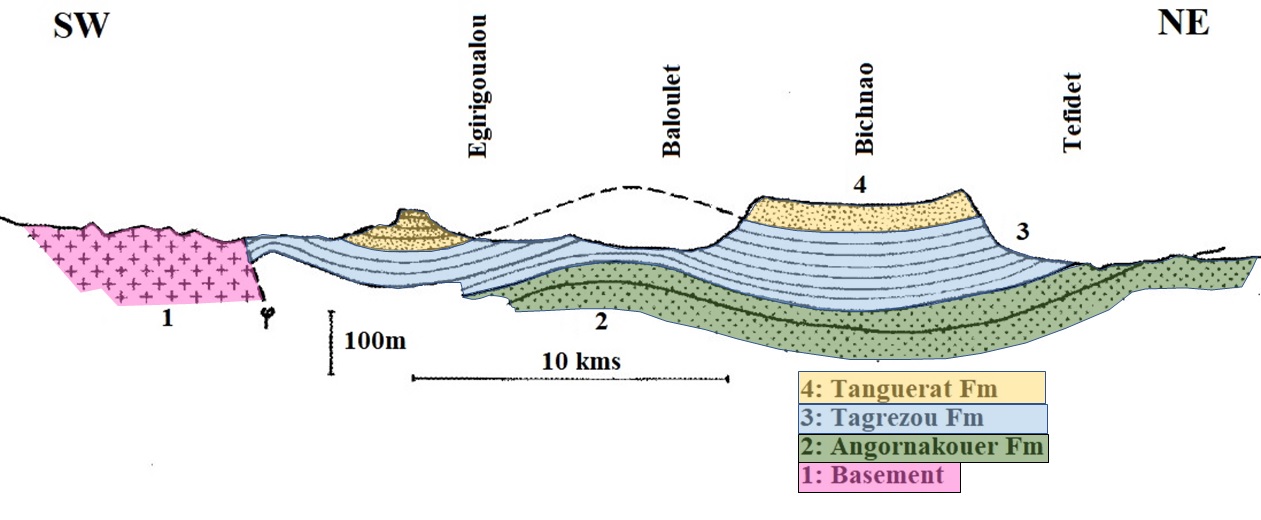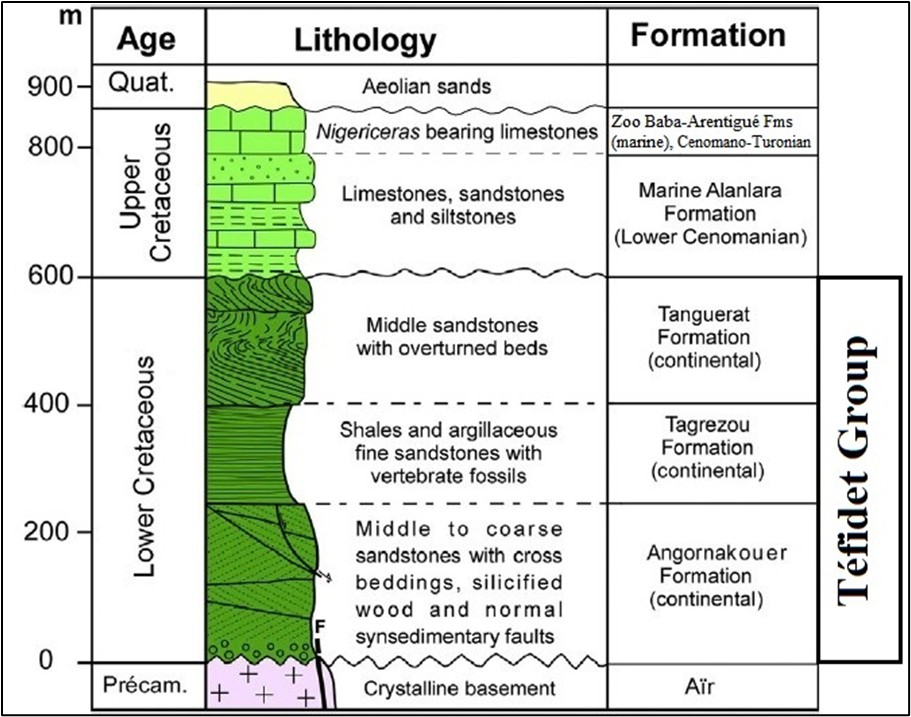Tagrezou Fm
Type Locality and Naming
Faure, 1959. Group: Téfidet Gr
References: Faure, 1959, 1966; Fabre et al., 1983; Konaté et al., 2019.
Synonym: Tagrézou Fm
Equivalent(s): Elrhaz Fm
Lithology and Thickness
It combines thin clay and sandy facies. Thickness is 150-180 m. Several sections were interpreted by Faure (1966, p. 183-184); One of them is described herein (Figure):
The Bichnao Plateau, which separates Wadi Baloulet from Wadi Téfidet, is determined by a weakly dipping syncline, but very clearly defined. At the base of the west flank, medium-grained reddish-beige or pink sandstone emerges, passing to little coarse quartz sandstone rolled of 3 mm. On the surface, these sandstones are strewn with holes of approximately 1 cm. Silicified woods are abundant. Above, the cliff is made up of an alternation of micaceous white sandstone in beds of 0.2 to 1 m and white to yellowish or white sandstone clay. The top of the plateau, which dominates the plain for about 80 m, is in the form of soft pink or beige sandstone in large slabs with a ferruginous patina. The grain is generally quite fine and homogeneous, but a few thin coarser layers are also found. Some remarkable beds stand in columns one meter high. As a whole, the plateau is constituted by the levels of the upper part of the Tagrezou Fm. It is crowned by sandstone attributed to the base of the Tanguérat Fm.
In summary, the Tagrezou formation, as it appears in all the sections described by Faure (1966), includes the middle levels of the Téfidet Gr in which shaly intercalations sometimes appear rich in Crocodile and Dinosaurian bones. But the sand beds are numerous, and one notes levels of thick sandstone, not separated by shales towards the middle of the formation”.
In certain places, such as in Wadi Baouet, vertical veins of basaltic rocks cut through the layers of the Tagrezou Fm in a northwest-southeast direction.
[Figure 1. Section at the Bichnao Plateau in the Téfidet Sub-Basin. (Source: Modified from Faure, 1966).]
[Figure 2. Synthetic lithostratigraphic column of the Téfidet trough (Source: Modified from Konaté et al., 2019)]
Relationships and Distribution
Lower contact
Underlain by the Angornakouer Fm
Upper contact
Overlain by the Tanguérat Fm
Regional extent
GeoJSON
Fossils
Silicified woods. Vertebrate bones in calcareous-rich levels. It is the equivalent of the Elrhas lacustrine sediments of the Gadoufaoua fossiliferous site (dinosaurs, crocodilians …) in the Iullemmeden Basin.
Age
Depositional setting
Continental
Additional Information

